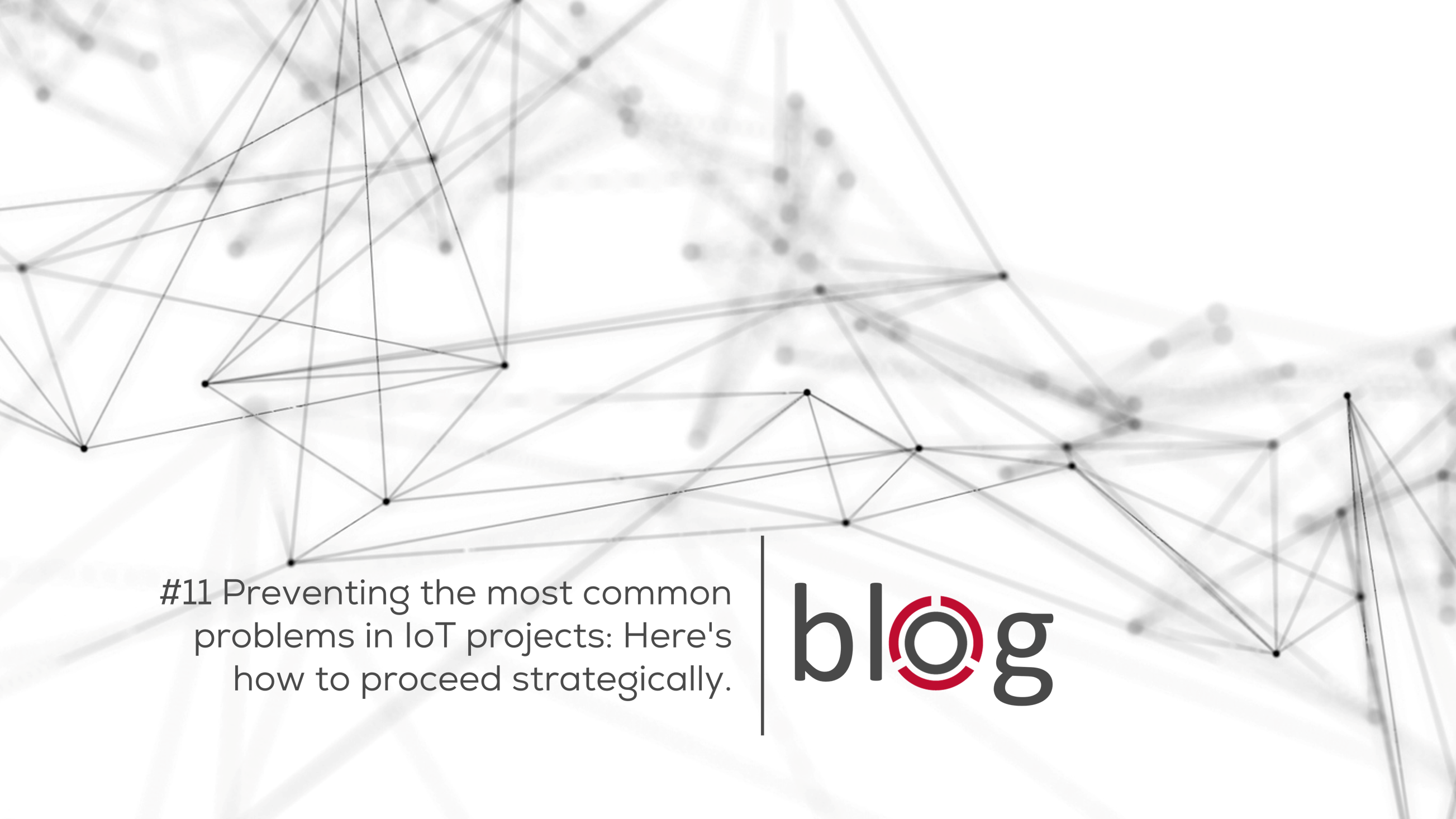Preventing the most common problems in IoT projects: Here’s how to proceed strategically.

In today’s digital world, Internet of Things (IoT) projects are becoming increasingly common and important. They offer opportunities such as optimizing workflows, saving resources and creating innovative business models. However, it is not uncommon for companies to encounter challenges that jeopardize the success of IoT projects.
In this post, we’ll take a look at the most common issues that can arise in IoT projects and give you concrete strategies to prevent them.

1. Lack of security
The IoT opens doors for innovation, but also for potential security risks. Security is one of the biggest concerns in the IoT space. IoT devices are continuously connected to the Internet and are constantly exchanging data. This data makes attractive targets for hackers. An inadequately secured IoT device can pose a risk not only to itself, but also serve as a gateway into an entire network.
Did you know that many IoT devices have default or weak passwords, outdated software, or inadequate encryption mechanisms? This increases the risk of DDoS attacks, data leaks and other security breaches.
Strategy: invest in robust security measures from the start. Regularly update your security protocols and train your team on how to use IoT devices.
2. Insufficient integration
IoT devices need to work smoothly with existing systems and technologies. IoT devices come in different shapes and sizes with different operating systems and protocols. If these devices are not properly integrated with existing systems and applications, data loss, malfunctions, or even system failures can occur.
Did you know that integration often requires custom solutions because it can be difficult to find standard protocols or formats between different devices? This can lead to increased complexity and cost.
Strategy: Plan the integration from the beginning. Work with experts who have experience in successfully integrating IoT solutions.
3. Lack of scalability
Your IoT system must be able to grow without losing performance. Because IoT projects often start with a limited number of devices and expand later, they must be able to scale as the number of devices and amount of data increases. A system that doesn’t scale can lead to performance bottlenecks, increased costs or system failures.
Did you know that scalability refers not only to hardware, but also to databases, networks and the applications themselves? Without proper architecture, expanding an IoT system can become a major problem.
Strategy: Go for modular and scalable architectures. This will give you the flexibility you need for future growth.
4. Unclear ROI
Many companies start IoT projects without setting clear expectations for return on investment (ROI). Companies need to be able to measure the value of these investments in order to adjust their strategy and use their resources efficiently.
Did you know that measuring ROI for IoT projects can be complicated because many of the benefits, such as improved efficiency or customer satisfaction, are difficult to quantify? It’s important to define clear KPIs and regularly review the value of the project.
Strategy: define clear goals and measurable KPIs from the beginning. Monitor project progress and adjust your strategy as needed.
Act now.
It is essential to address potential problems early on and take appropriate countermeasures. The key to success lies in precise planning, continuous monitoring and constant optimization.
If you need assistance with your IoT project or have any questions about the topics addressed, don’t hesitate to schedule a free consultation. We will be happy to help you turn your vision into reality.
Sind Sie bereit mit uns den
nächsten Schritt zu gehen?
Nehmen Sie jetzt mit uns Kontakt auf und lassen Sie uns gemeinsam das volle Potenzial der Digitalisierung nutzen.
trescore GmbH
Burtenbacher Str. 12
86505 Münsterhausen
0 82 81 - 50 899-40
info@trescore.de


